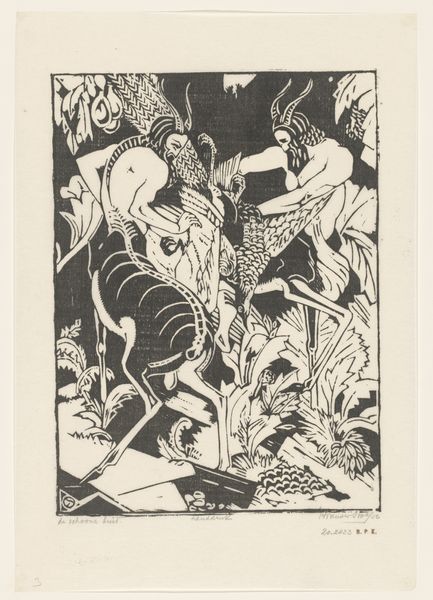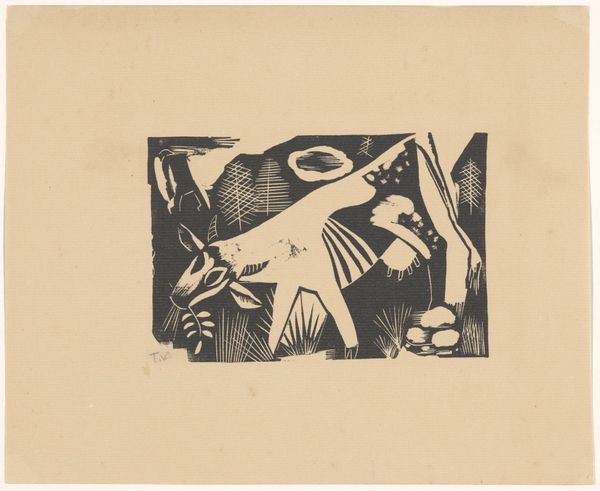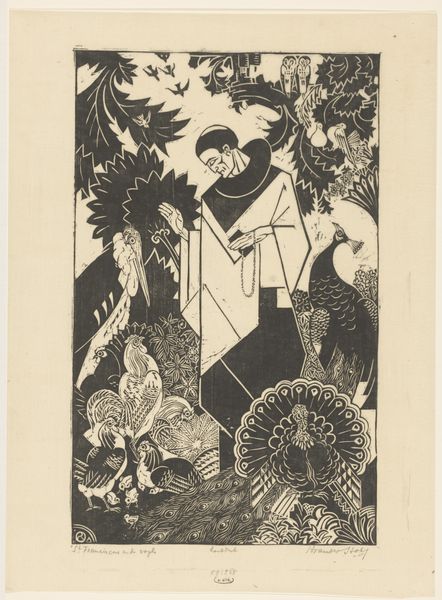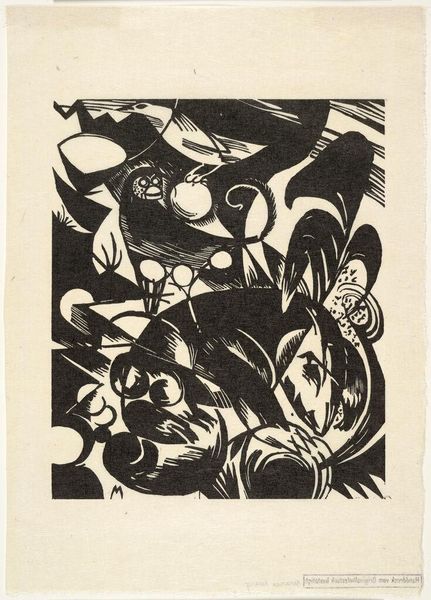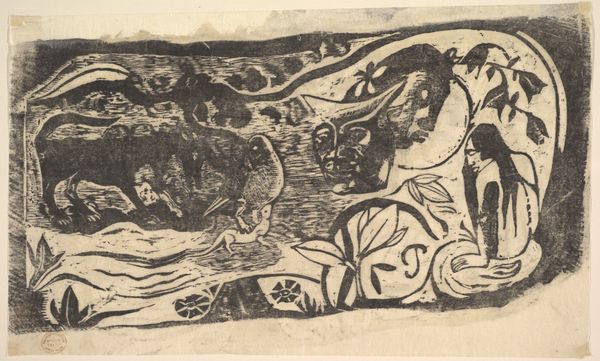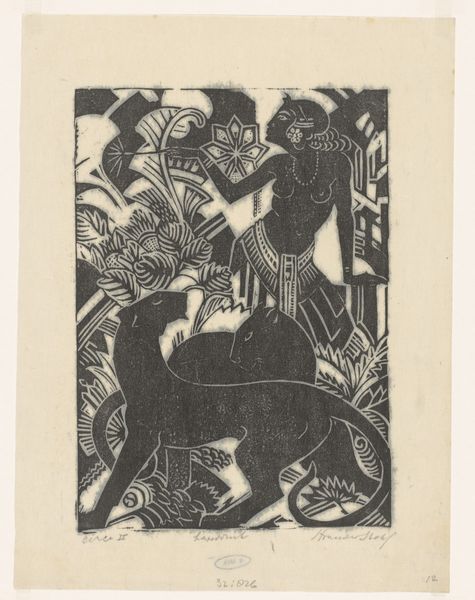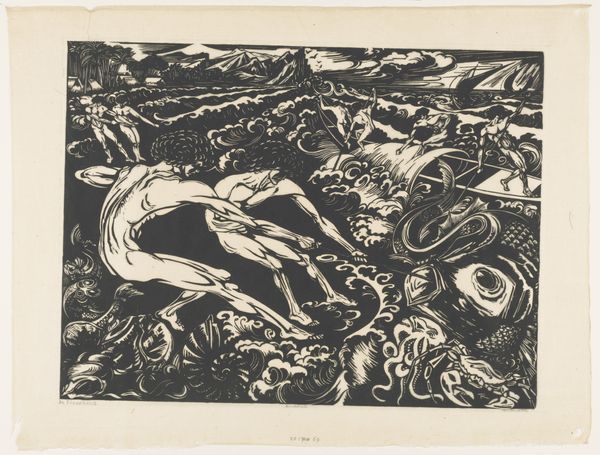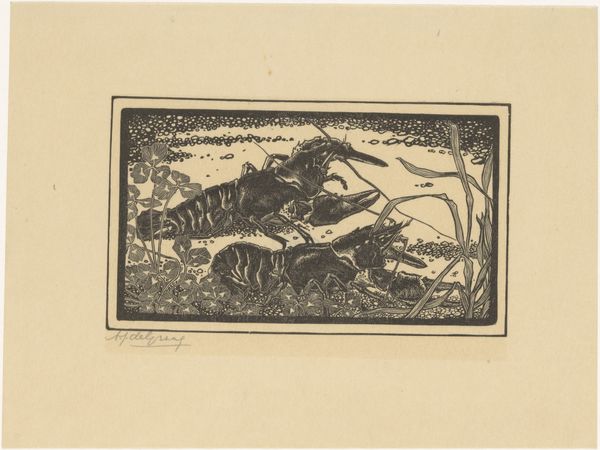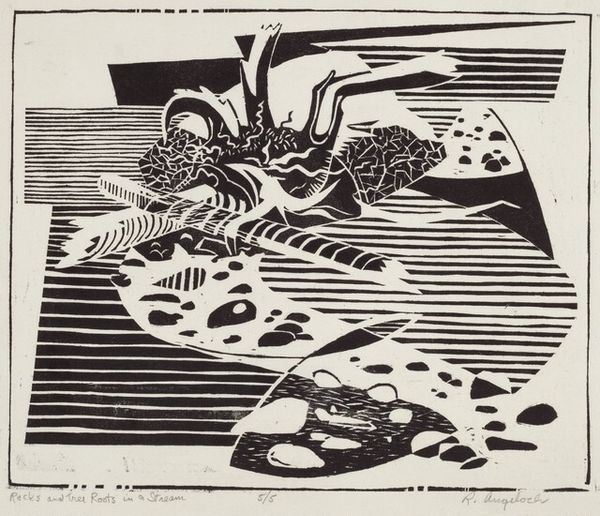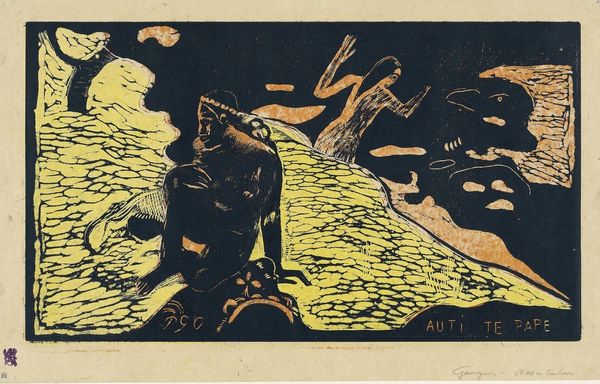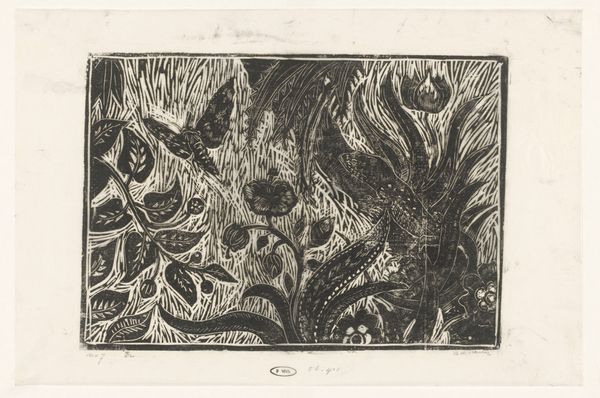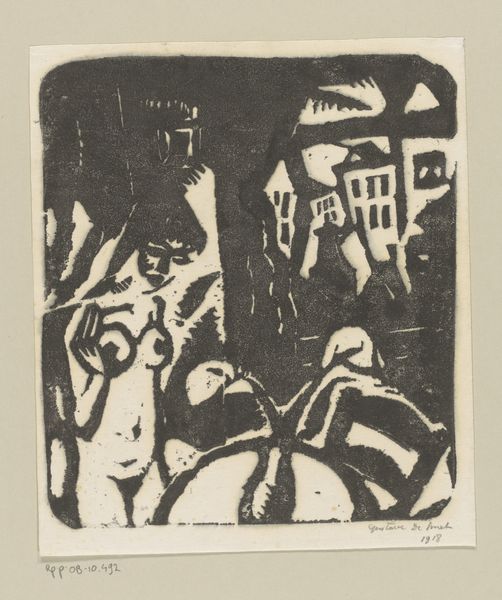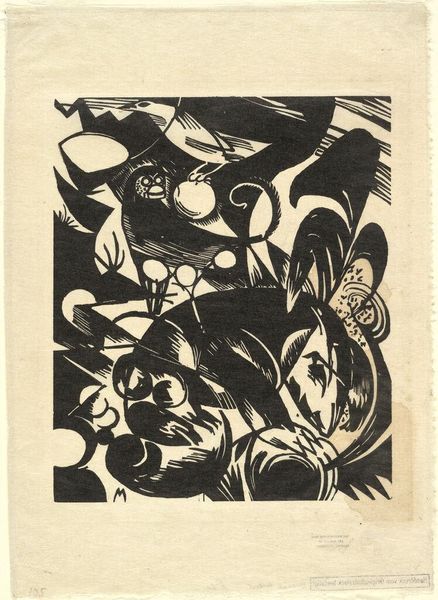
woodcut
#
animal
#
landscape
#
figuration
#
expressionism
#
woodcut
Copyright: Public domain US
Editor: We're looking at Heinrich Campendonk's "The Tiger," a woodcut from 1916. It strikes me as almost dreamlike, this bizarre mix of creatures crammed into a single space, even though it's all just black and white. What catches your eye? Curator: It's a fascinating image, isn't it? The tiger, yes, but surrounded by these...other creatures. Frogs, flora...they are all symbols of transformation and liminal spaces in folk traditions. Do you think Campendonk was referencing a specific story, perhaps a fable? Editor: I hadn't thought of it that way. I was too busy trying to figure out the spatial relationships! The frogs on top seem almost decorative. The tiger looks powerful but also trapped. Curator: Look closely at how he uses negative space – the white areas carved out from the wood. See how it defines not just the forms, but the *energy* of the piece? That jaggedness surrounding the tiger almost feels like bars. What could those jagged edges symbolize for him? Editor: Maybe the constraints of wartime? This was created during World War One, right? A feeling of being hemmed in. Curator: Exactly. And consider the psychological weight of animals in art at this time. Expressionists often used animal imagery to depict raw emotion, untamed instinct. The tiger as a symbol of something... Editor: Powerful but cornered. It does change my view of the piece. It feels more layered and intense now, seeing it as less a landscape and more about inner turmoil. Curator: Indeed. And even with the black and white, it speaks volumes. Campendonk uses simple forms and lines to create a rich, almost suffocating, world of symbols. Editor: It is intense. Thanks. I didn’t expect to get all that from a woodcut of a tiger and some frogs!
Comments
No comments
Be the first to comment and join the conversation on the ultimate creative platform.
